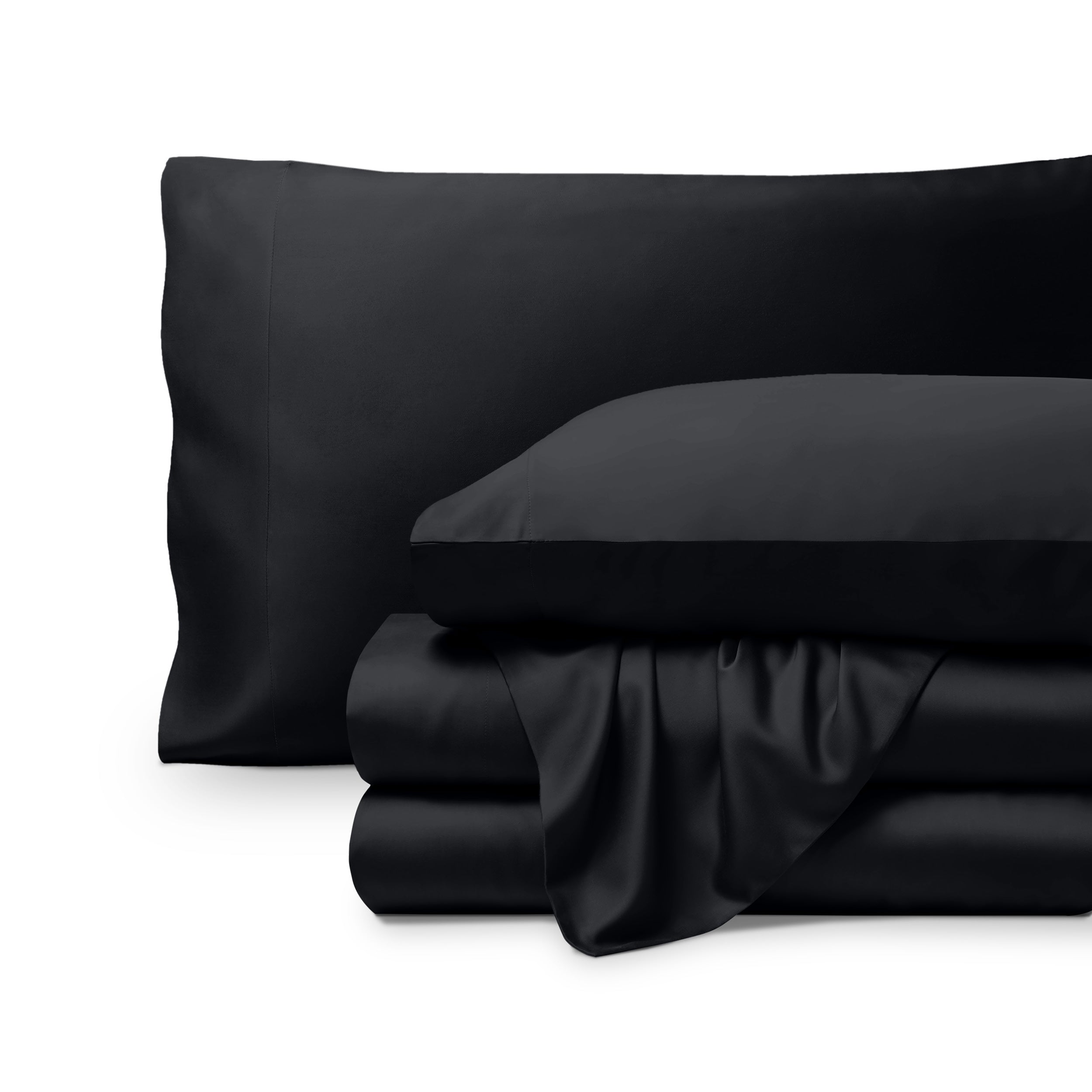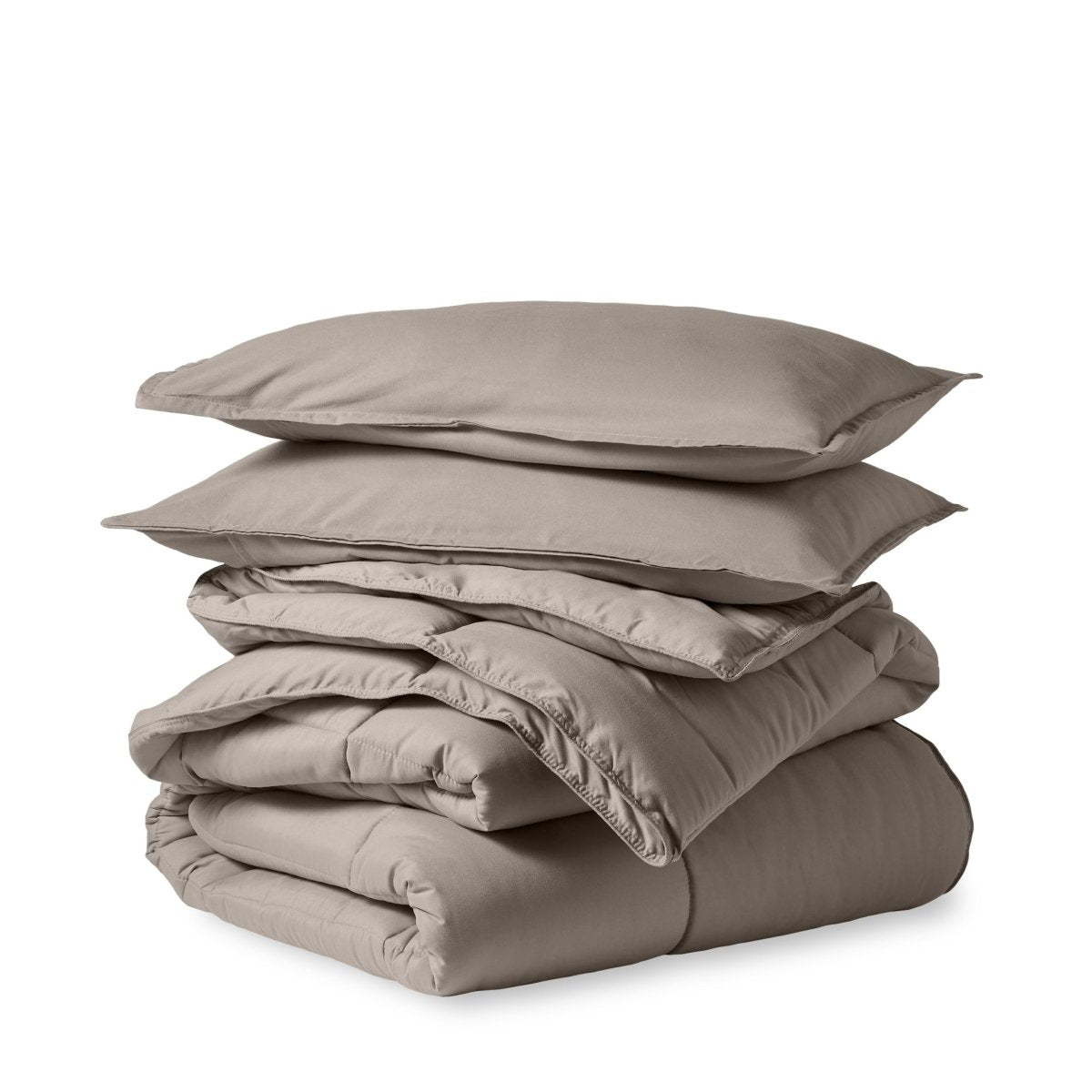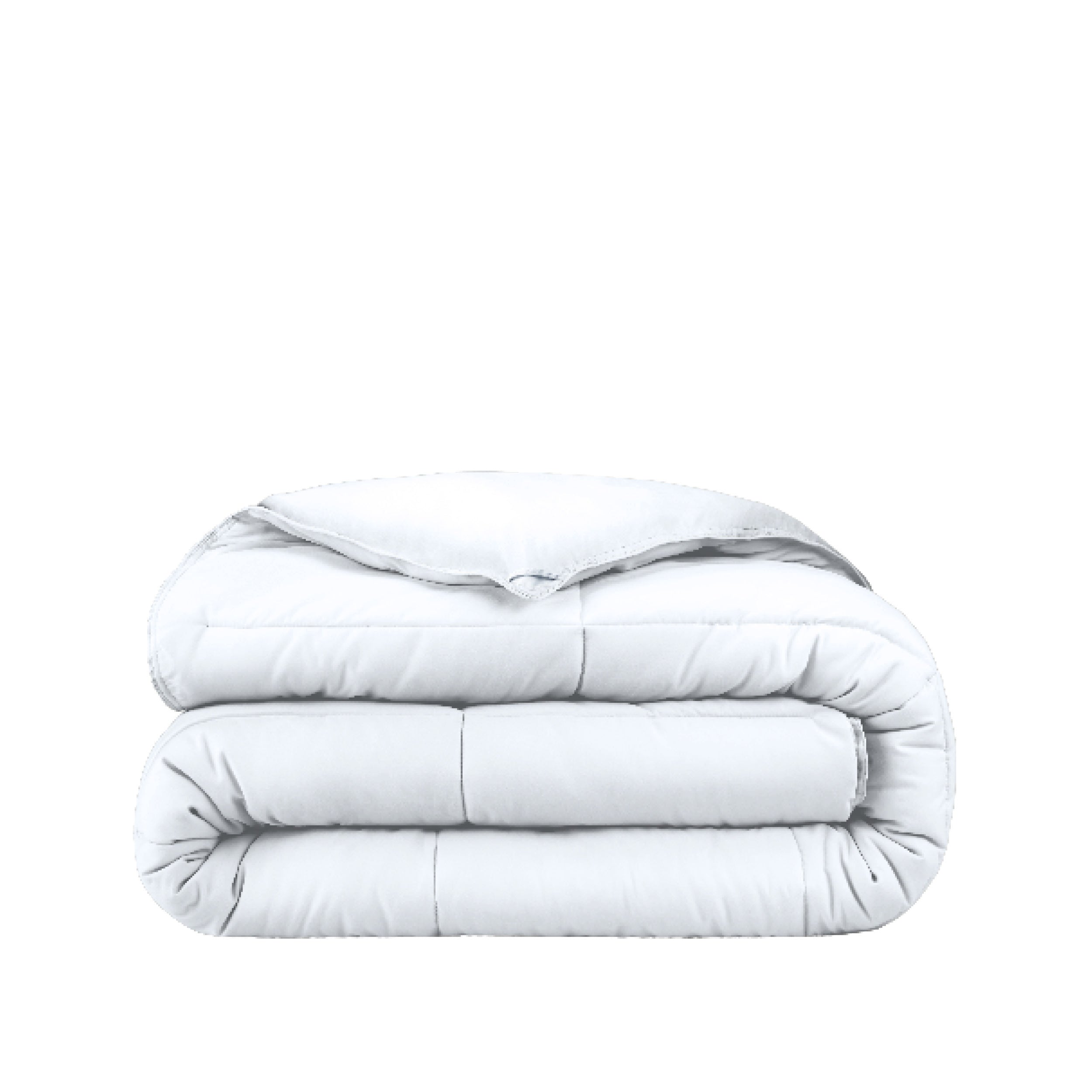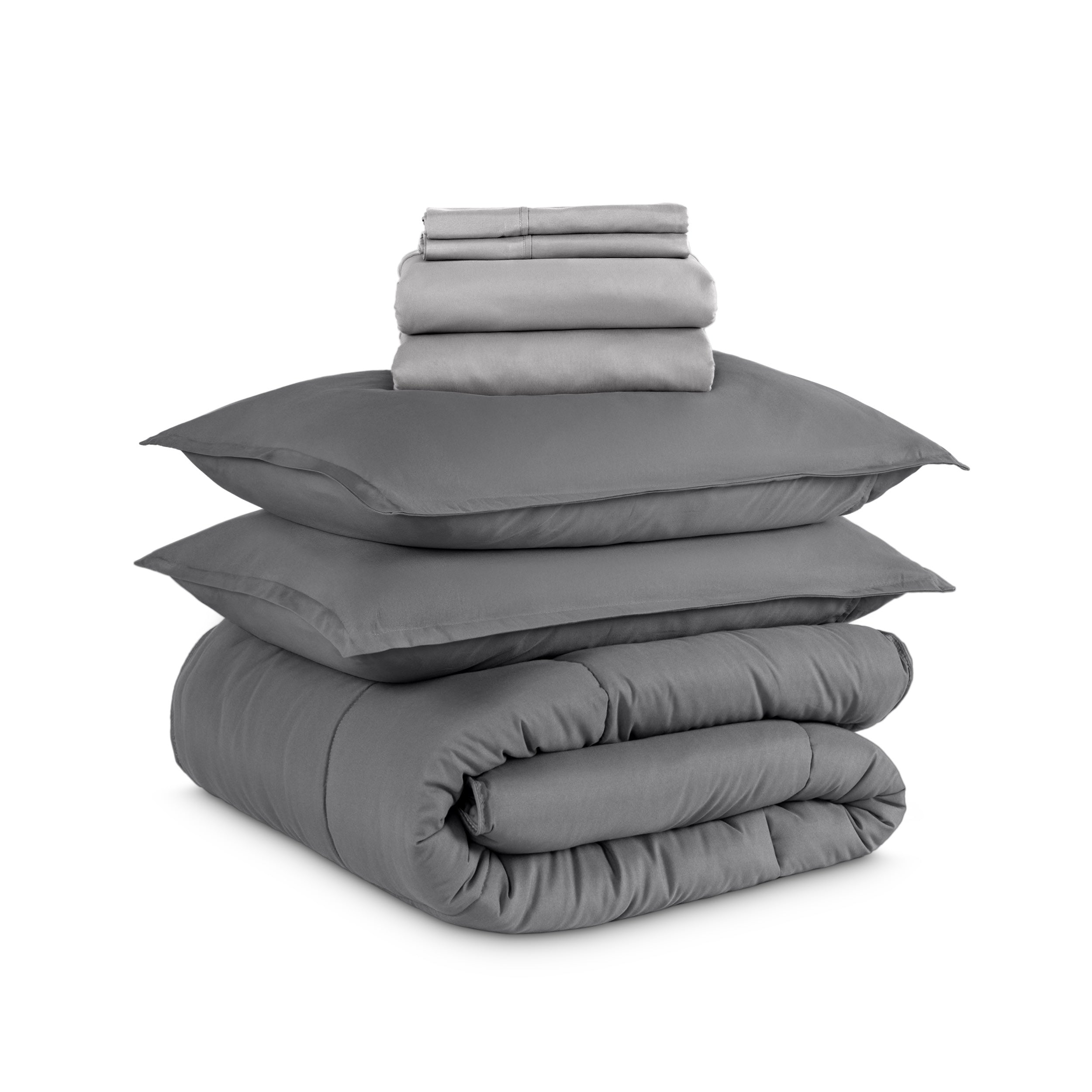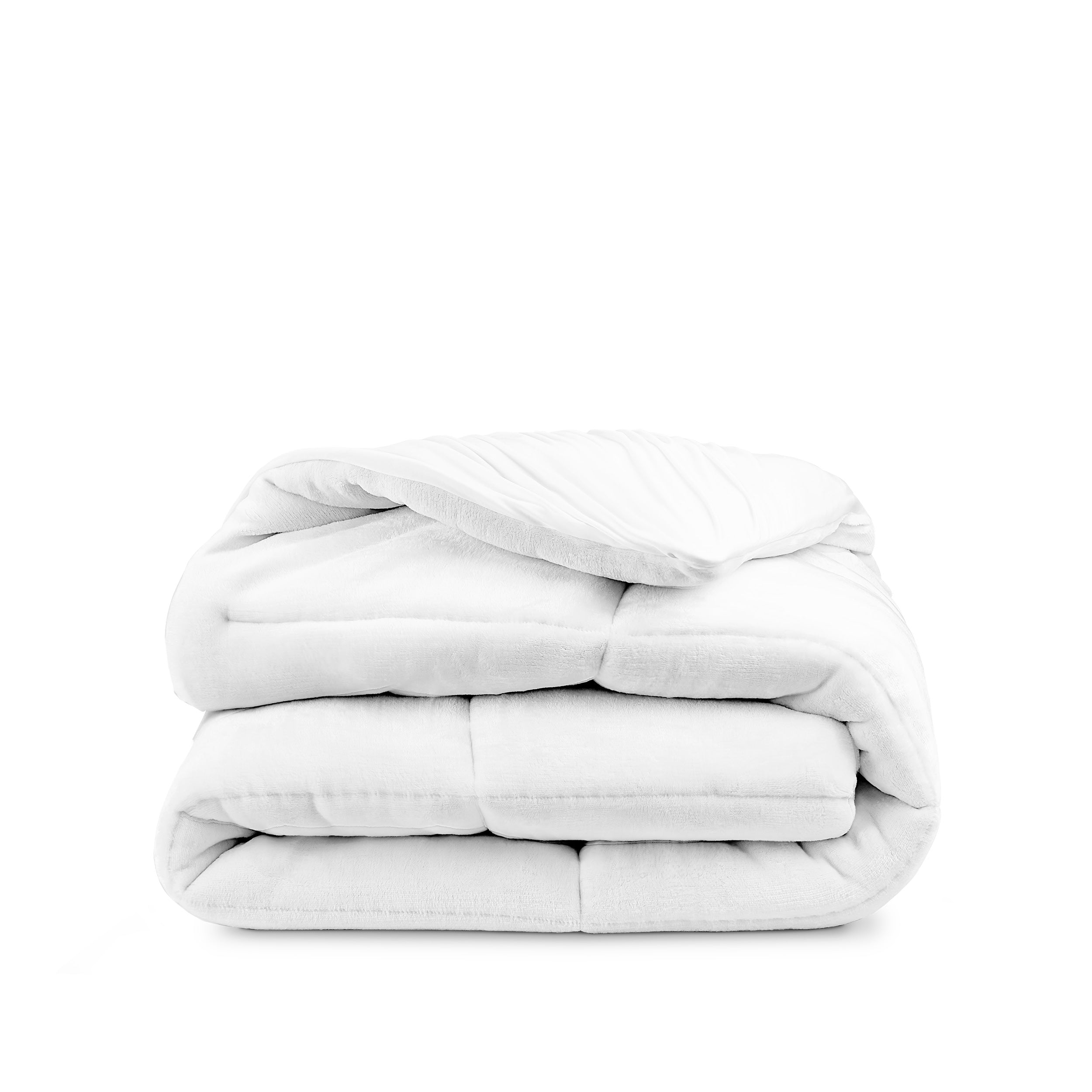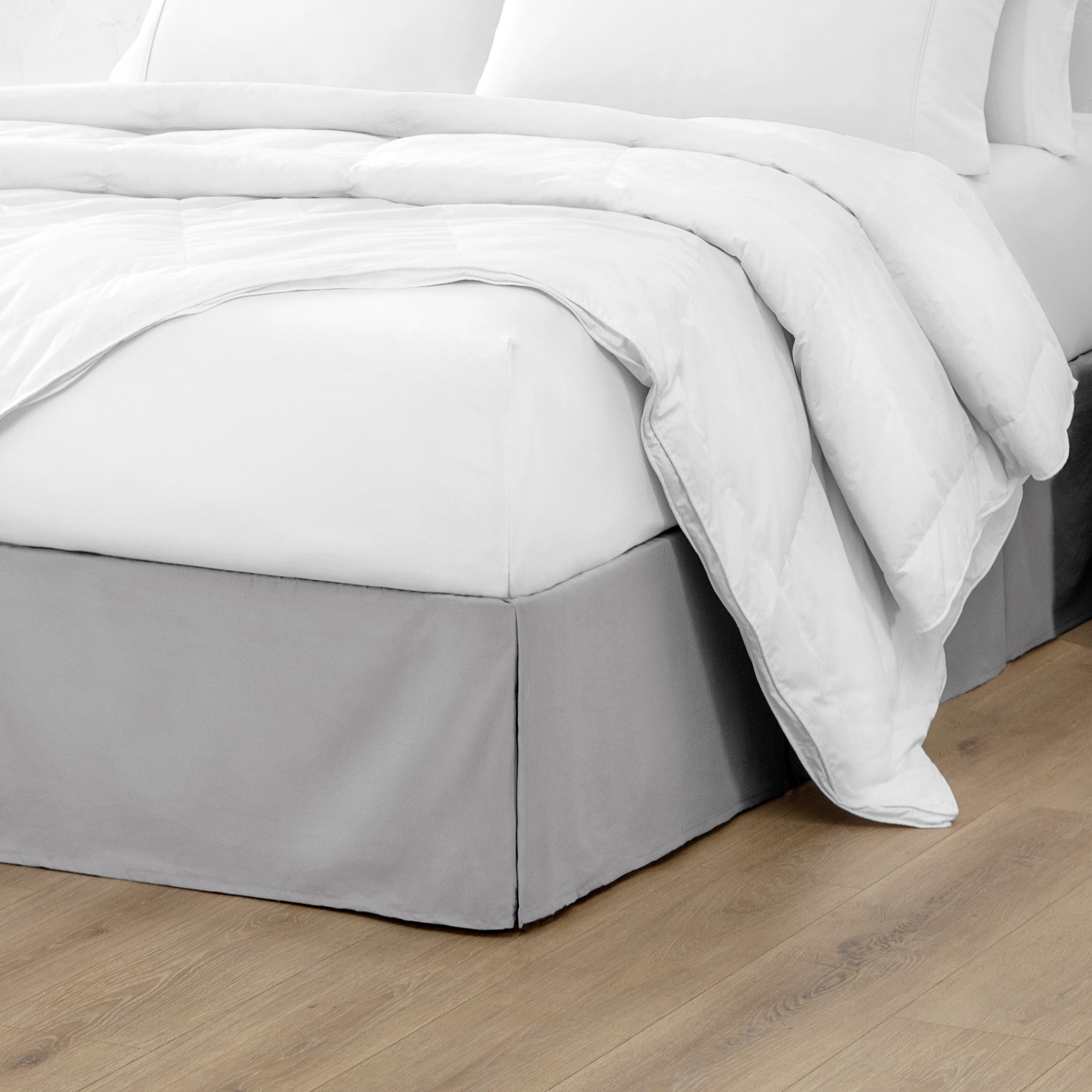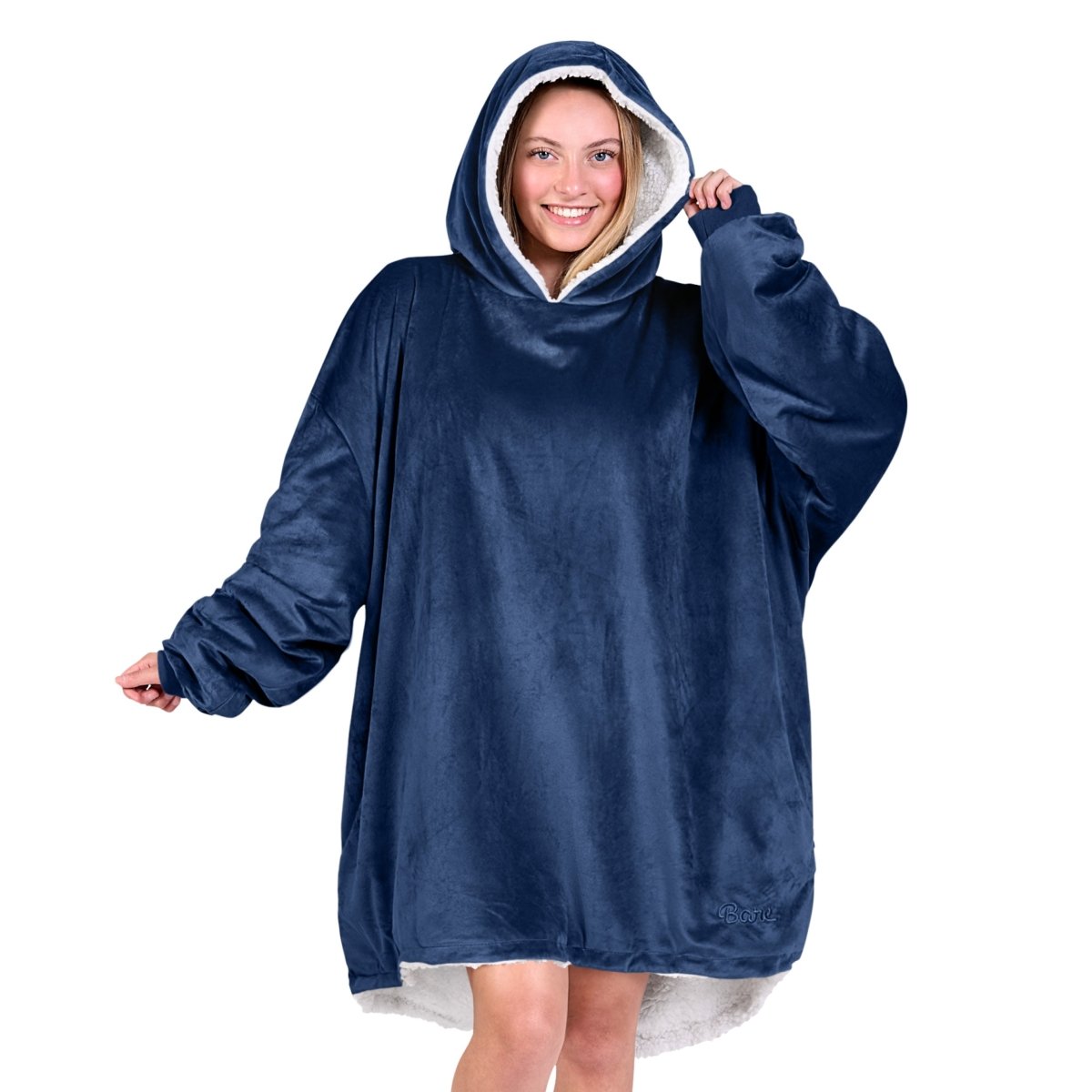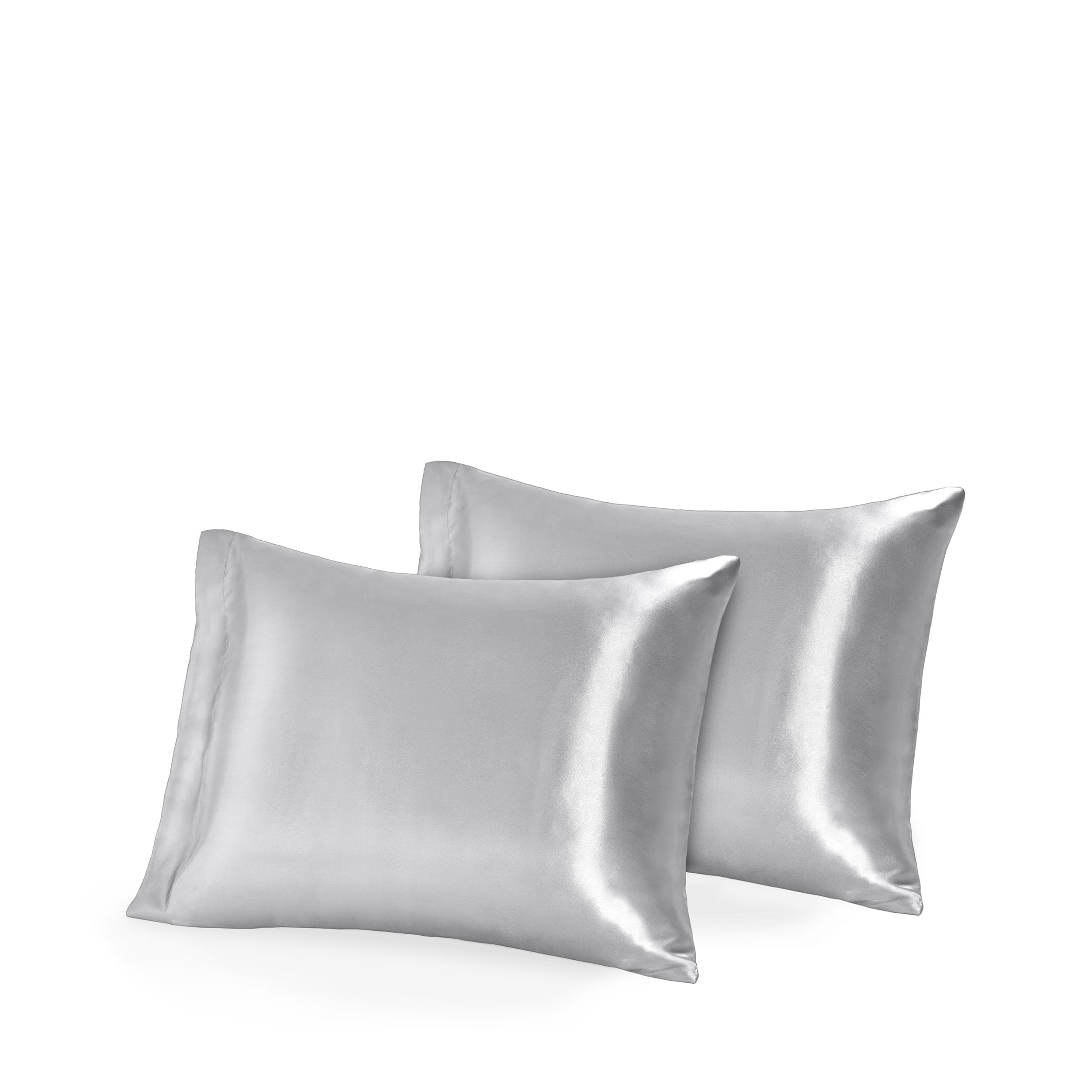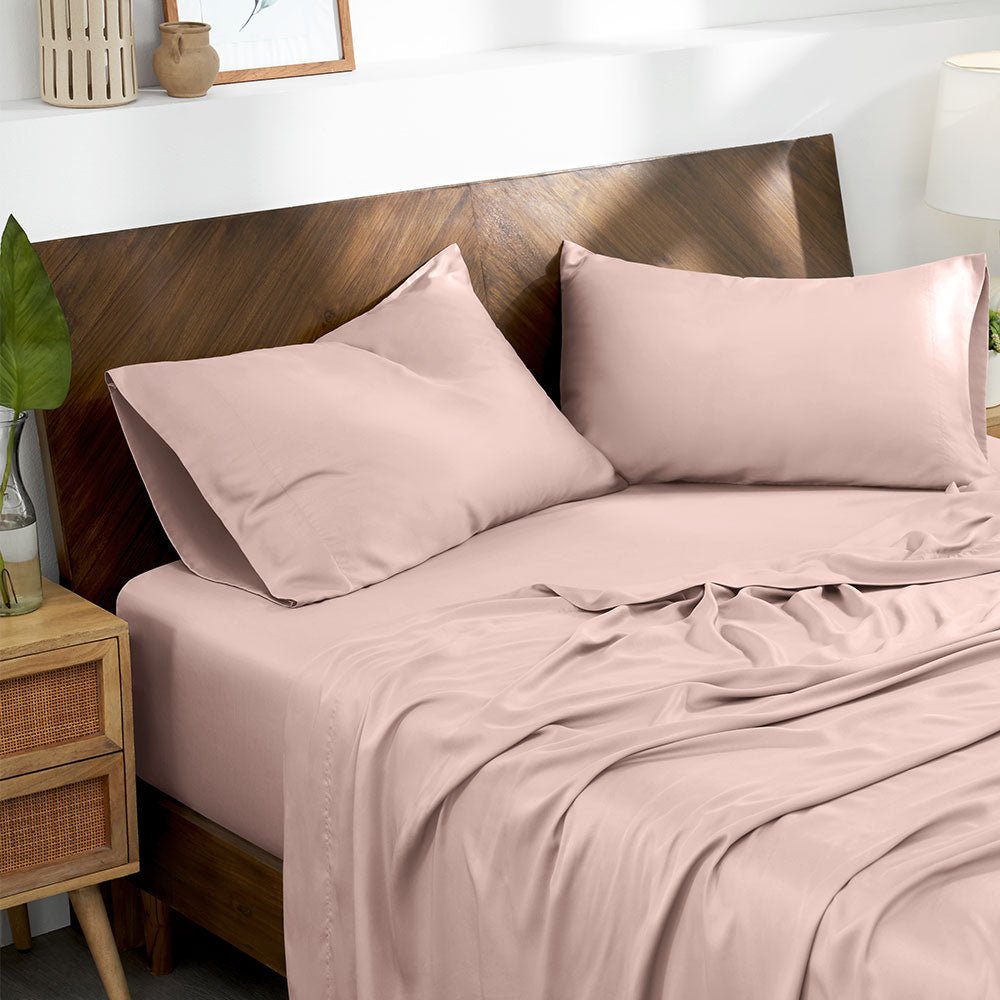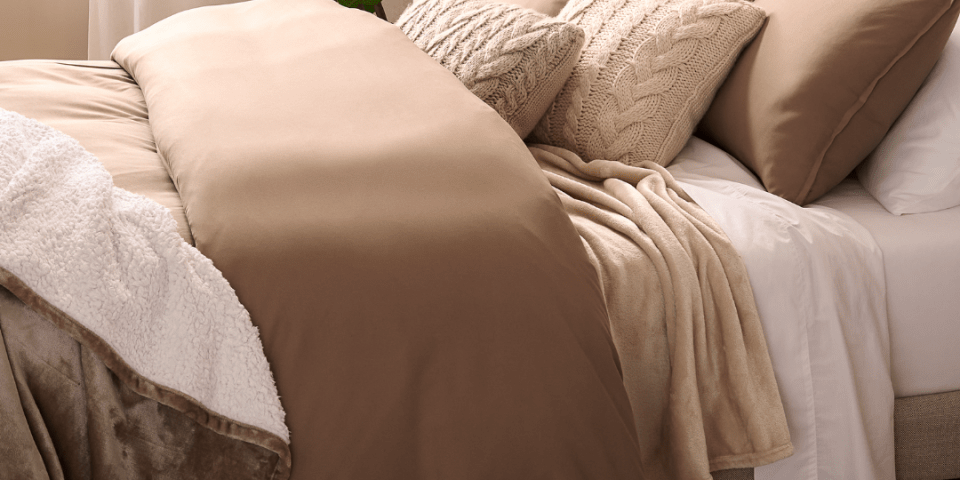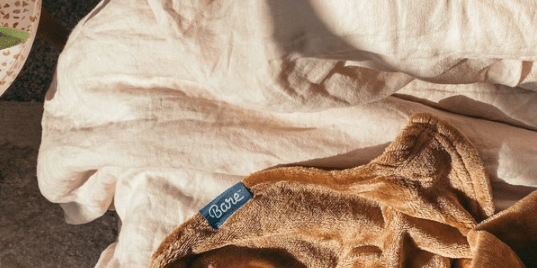As a consumer, navigating through all of the technical terms the bedding industry uses can be confusing. For example, do you know the difference between percale and sateen? (Hint, they are two different types of weaves). How about a duvet and a comforter? Bare Home is here to help make sense of it all with our glossary of bedding terms. That way you can get the product you need for your best sleep tonight. Let's take a look...

Baffle Box
A type of construction used in down comforters, in which a strip of fabric is sewn between each cover. This creates a "box" that keeps the down filling evenly distributed and allows it to reach full loft.
Why it's important: Unlike standard sewn-through box stitching, baffle box construction does not create cold spots, resulting in a warmer duvet.
Brushed
The term "brushed" is often used to describe fabric that has been treated with a mechanical process to raise the fibers from the surface. This process can be accomplished by using a special brush that agitates the fibers or by running the fabric through a set of rollers.
Why it's important: As a result of this treatment, brushed fabrics have a soft, fuzzy surface that is extremely comfortable. In addition, brushed fabrics typically have better insulating properties than others.

Comforter
A comforter is a type of bedding that is typically filled with down, feathers, or synthetic fibers. It is thicker and warmer than a quilt and is often used as an extra layer of warmth during the winter months. Comforters are available in a variety of sizes, including twin, full, queen, and king. They can also be purchased in different thicknesses, depending on how much warmth you need.
Combed Cotton
Combed cotton is a type of cotton that has been put through a combing process to remove impurities and short, undesirable fibers.
Why it's important: The combing process results in a stronger, more lustrous yarn that is typically softer and smoother than just carded cotton. It also helps to reduce pilling, making combed cotton an excellent choice for products that will see a lot of wear.

Coverlet
A coverlet is a decorative fabric bed cover, sometimes quilted, that covers the top of the bed. It usually hangs down to or near the floor and is used for both warmth and style. Coverlets are usually lighter than blankets and comforters and can be easily removed and washed. They are often used in warm weather as an additional layer of decoration on the bed.
Duvet
A duvet is a type of comforter that is filled with down or other soft material. They are inserted into a duvet cover, which can be removed and washed periodically. Duvets originated in Europe, and they remain popular there today. In North America, duvets are sometimes called comforters, quilts, or down comforters. However, the term "duvet" is becoming more common in the United States.
Flannel
Flannel is a soft woven fabric, typically made from cotton or wool, that is used to make clothing and other household items. The fabric is napped on both sides, meaning it has a brushed surface that gives it a soft, fuzzy feel.
Why it's important: Despite its traditional associations with winter weather, flannel is a versatile fabric that can be used for a variety of purposes.

Fleece
The term "fleece" can refer to a variety of different fabrics, but it is most used to describe a type of soft, brushed material. Fleece is usually made from synthetic fibers such as polyester or nylon, making it lightweight, warm, and moisture-wicking.
GSM
"GSM" refers to Grams per Square Meter and is a measurement of the weight of a fabric.
Why it's important: The higher the number, the thicker and more durable the fabric. For example, t-shirts have an average GSM of 170, but a heavyweight sweatshirt might have a GSM of 300.
Knit
Knit fabrics are made by looping yarns together. The resulting fabric is typically stretchy and has a softer hand than woven fabrics. The term “jersey” is most commonly used to describe a type of knit fabric with a smooth, stretchy surface.
Why it's important: Knit fabrics are often used in clothing and bedding, as they are comfortable and allow the skin to breathe.

Linen
Linen is a textile made from the fibers of the flax plant. It is prized for its strength and durability, as well as its distinctive textured appearance. Linen is widely used in the manufacture of clothing, but it is also popular for use in bedding, towels, and tablecloths.
Why it's important: Linen is known for its absorbency and its ability to wick away moisture, making it a cool and comfortable fabric in warm weather. It is also hypoallergenic, so it's a popular choice for those with allergies or sensitive skin.
Microfiber
Microfiber is a type of material that is made from extremely fine synthetic fibers woven together to form a fabric.
Why it's important: Microfiber bedding is known for being very soft and lightweight, as well as being more durable and wrinkle-resistant than traditional cotton bedding.
Nap
A nap is the raised, fuzzy surface on fabric that is created when the fibers are brushed in one direction. Napped fabrics have a soft, velvety feel and often appear brighter or richer in color than their un-napped counterparts. Common napped fabrics include velvet, flannel, and fleece.
Why it's important: When choosing a napped fabric, it is important to consider how it will be used. For example, a fabric with a long nap may be more difficult to clean or iron than a short-napped fabric. In addition, napped fabrics often show wear more easily than other fabrics, so they may not be ideal for high-traffic areas.

Ring-Spun
Ring spinning is a method of spinning fibers, especially cotton, to produce a very fine, strong thread. It consists of passing the fiber through a series of rings where it is continuously twisted to add additional strength.
Why it's important: The finished thread is much stronger and more uniform than thread that is spun using other methods. It is also softer and more comfortable than other types of cotton.
Sateen
Sateen is a fabric weave that is characterized by a smooth, lustrous surface that is created by floating the weft threads over four or more warp threads. This technique creates a fabric that is very soft and has a silky hand.
Why it's important: Sateen is a popular fabric for bedding because it is smooth and soft to the touch, but also durable and resistant to wrinkling.
Silk
Silk is a natural protein fiber woven into a textile. The best-known type of silk is obtained from the cocoons of the larvae of the mulberry silkworm, Bombyx mori, reared in captivity (sericulture). Silk is renowned for its softness, shine, and strength, and is often used in high-end bedding due to its luxurious, smooth texture.
Why it's important: Silk is naturally hypoallergenic, so it is an ideal choice for those with allergies or sensitivities. In addition, silk bedding has excellent breathability and helps to regulate body temperature, making it perfect for use in any season.

Thread Count
In simple terms, thread count is the number of threads per square inch of fabric. The higher the thread count, the more densely woven the fabric will be.
Why it's important: In general, sheets with a higher thread count will be softer and more durable than those with a lower thread count. However, it's important to note that other factors can affect sheet quality, such as the type of fabric and the way it is woven. As a result, thread count is only one aspect to consider when choosing bedding.
TOG
"TOG" is a measure of thermal resistance used to rate the warmth of bedding. The higher the TOG rating, the greater the ability of the bedding to insulate against heat loss. A quilt with a TOG rating of 10, for example, will be much warmer than one with a TOG rating of 5.
Twill
Twill is a type of fabric weave with a distinctive diagonal pattern. The most common type of twill is made by passing the weft thread over two or more warp threads and then under one or more warp threads, resulting in a diagonal ribbing on the surface of the fabric. Twills are typically made from sturdy, durable fibers such as cotton.
Why it's important: Because of their durability and unique appearance, twill fabrics are also often used for upholstery, curtains, and other home decor items.

Weave
Weaving is a method of fabric construction in which two sets of threads are interlaced at right angles to create a textile. The lengthwise threads are called the warp, and the crosswise threads are called the weft. The basic weave consists of passing the weft under and over alternate warp threads.
Why it's important: Fabrics can be given different textures by varying the number of threads used or how they are woven. For example, a fabric with a tight weave will be more durable than one with a loose weave.
Conclusion
Bedding is an important part of our lives, and there are a lot of factors to consider when choosing the perfect set. In this blog post, we've outlined some of the most important considerations, such as thread count, TOG rating, and weave. We hope that this information will help you decide what type of bedding is best for you.

